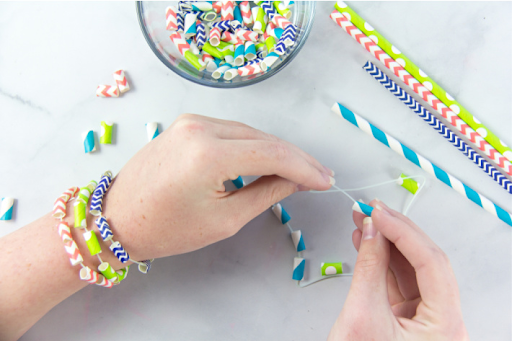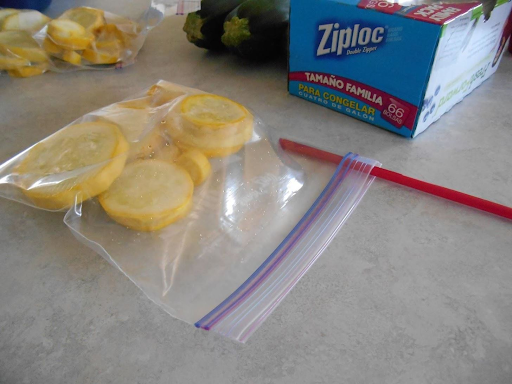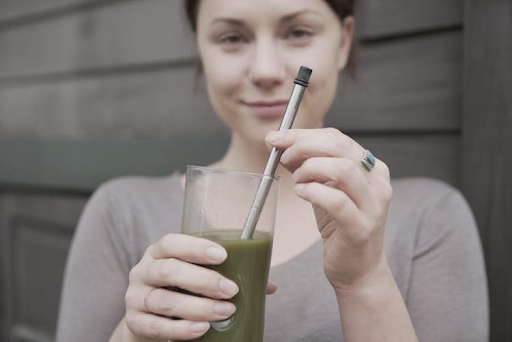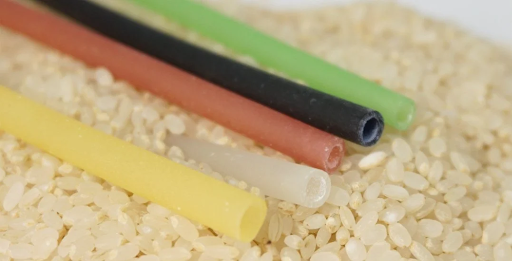In recent years, there has been a growing global concern about the environmental impact of plastic waste. Plastic straws, in particular, have come under scrutiny due to their widespread use and harmful effects on the environment. One of the key questions that many people have is: Are plastic straws recyclable? The article below will help you answer this question.
1. What makes plastic straws harmful?
Plastic straws pose a significant environmental threat due to their enduring nature. Unlike organic materials, plastic straws do not biodegrade naturally; instead, they break down into smaller particles over time, known as microplastics.
These microplastics infiltrate various ecosystems, including oceans, where they accumulate and adversely affect marine life. Fish and other aquatic creatures often mistake these particles for food, leading to ingestion and, eventually, entering the human food chain. This contamination raises serious concerns about the impact of plastic straws on human health, underscoring the urgency of finding sustainable alternatives.
Moreover, the manufacturing process of plastic straws exacerbates environmental issues. It depletes valuable fossil fuels and releases greenhouse gases into the atmosphere, contributing to climate change.
Additionally, the improper disposal of plastic straws further compounds the problem. Many end up in landfills or incinerators, releasing harmful chemicals and contributing to air and soil pollution. Their lightweight nature also makes them susceptible to wind and water transport, leading to the unsightly littering of natural landscapes. Recognizing these detrimental effects, global efforts are underway to raise awareness, reduce consumption, and promote eco-friendly alternatives, aiming to curb the environmental havoc caused by plastic straws.
Read more: What are compostable straws made of? Plastic straw manufacturing process
2. Are plastic straws recyclable?
The short answer is yes; plastic straws are technically recyclable. They are typically made from
polypropylene, a plastic material that can be recycled. However, the practicality of recycling plastic straws is a complex issue. Their small size and lightweight nature make them difficult to sort and process in recycling facilities. As a result, many recycling facilities are not equipped to handle plastic straws effectively.
Furthermore, plastic straws are often contaminated with food and beverage residues, which can complicate the recycling process. Contamination makes it harder to recycle the plastic and can lead to a lower quality of recycled plastic. As a result, many recycling centers may choose to discard plastic straws rather than attempting to recycle them.
Due to these challenges, the recycling of plastic straws is not as common or efficient as recycling large plastic items. This difficulty in recycling has led to a shift in focus towards reducing the use of plastic straws altogether and promoting alternatives such as reusable straws made from stainless steel, glass, or bamboo.
3. Ways to reuse plastic straws
3.1. Art and crafts products
Plastic straws can serve as a fantastic medium for various art and crafts projects. They can be easily bent, cut, or melted to create intricate designs. For instance, you can cut colorful straws into different lengths and create mosaic-like patterns on greeting cards or photo frames. By using a heat source, such as a candle flame, plastic straws can be gently melted and molded into unique shapes, adding a touch of creativity to your artwork.
3.2. DIY jewelry

Making innovative jewelry from plastic straws
Creating jewelry from plastic straws is a trendy and creative idea. By cutting straws into small, uniform beads, you can make necklaces, bracelets, and earrings. These lightweight beads are versatile; they can be painted, coated in glitter, or left transparent, allowing for endless customization possibilities. Additionally, combining them with other eco-friendly materials like wooden beads or charms enhances the overall appeal of the jewelry pieces.
3.3. Plant markers
Plastic straws make excellent plant markers due to their durability. Simply cut them into small stakes and use a permanent marker to write the names of your plants. These markers not only help you identify your plants but also add a colorful touch to your garden. Plastic straws are water-resistant, ensuring your plant labels remain legible even after watering.
3.4. Charger/Earphone/Charging Cords Protective Cover
Cut plastic straws into small rings and then slice one side lengthwise, and wrap them over the charging cable or headphones to create a cord protective cover. These can be wrapped around charging cables, earphones, or any other cords to prevent tangling. The straws act as protective sleeves, prolonging the life of your cords and keeping your space neat and organized.
3.5. Creating a Vacuum Sealer

Remove all the air from the Ziploc bag using a plastic straw
Sometimes, removing air from your Ziploc bag before sealing it can be a bit challenging. However, there’s a simple solution: using a straw. Removing air from Ziploc bags is crucial, especially when you’re storing vegetables or other perishable items.
First, place your food inside the Ziploc bag and insert a straw into it. Make sure one end of the straw sticks out for the air to escape through. Once you’ve done this, partially zip the Ziploc bag until you reach the straw. Then, squeeze the air out of the bag by pushing it through a plastic straw. When the air is completely removed, swiftly remove the straw and seal the bag completely.
3.6. Learning support tools
Plastic straws can be used in classrooms or homeschooling environments for educational purposes. Teachers can use straws to demonstrate mathematical concepts like fractions and geometry. By cutting straws into equal lengths, children can learn about measurements and practice counting. Learning activities using plastic straws make learning creative and interesting.
3.7. Party decorations
Cut plastic straws into smaller sections and string them together to create vibrant garlands, banners, or hanging decorations for parties. These decorations are not only colorful but also lightweight and easy to hang. You can experiment with different straw colors and lengths to match the theme of the event, adding a unique style to your party.
4. Alternatives to plastic straws
4.1. Paper straws
Paper straws are one of the most popular alternatives to plastic. They are biodegradable, compostable, and decompose much faster than plastic straws. Many restaurants and cafes have transitioned to using paper straws, reducing their environmental footprint.
4.2. Metal straws

Using metal straws instead of plastic straws
Metal straws, typically made from stainless steel or aluminum, are durable, reusable, and easy to clean. They come with cleaning brushes and are often in stylish carrying cases, making them a trendy and eco-conscious choice. Metal straws are perfect for those who prefer a more substantial and long-lasting option.
4.3. Bamboo straws
Bamboo straws are natural, biodegradable, and renewable. They are made from the hollow stems of bamboo plants and can be easily cleaned and reused. Bamboo straws offer a unique, earthy aesthetic and are an excellent choice for those looking for a sustainable and organic alternative.
4.4. Glass straws
Glass straws are elegant, reusable, and environmentally friendly. They are made from tempered glass, making them sturdy and safe for use. Glass straws are non-toxic and come in various designs, adding a touch of sophistication to your beverage experience. They can be cleaned easily and used repeatedly.
4.5. Straws from edible ingredients

Edible rice straws
Straws made from materials such as rice, wheat, or seaweed offer a unique solution and innovative alternatives. These straws are biodegradable and can be consumed after use, eliminating the need for disposal. Edible straws come in various flavors and are a creative way to enjoy your drinks without worrying about harming the environment.
Another one is pasta straws, made from wheat and water, which are biodegradable and an alternative gaining popularity. They are sturdy and can hold their shape in various beverages. Pasta straws are an excellent choice for eco-conscious consumers looking for alternatives to plastic straws.
5. Conclusion
In conclusion, the question, "Are plastic straws recyclable?" has a nuanced answer. While plastic straws are technically recyclable, the challenges associated with their recycling process often make it impractical and inefficient. The growing awareness of the detrimental impact of plastic straws has led to a global movement towards finding sustainable alternatives.
6. Use EuroPlas’ products to make biodegradable straws
At EuroPlas, we offer two products: Biofiller and Bioplastic, which are eco-friendly material solutions with the ability to undergo biological decomposition. Biofiller, under the brand name BiOMates, is a biological filling material made from bioplastic, modified CaCO3 powder, and dispersing agents. It is suitable for producing environmentally friendly products such as biodegradable packaging, injection-molded items, and single-use plastic molding. Additionally, our Bioplastic, a biopolymer compound, is derived from renewable biomass sources or fossil fuels. It easily decomposes into water, CO2, and compost within 12 months after disposal. Faced with the serious threat that plastic production and consumption pose to natural ecosystems and human life, Biofiller and Bioplastic serve as the foundation for sustainable development. Don't hesitate to get in touch with us to explore environmentally friendly products and cost-saving solutions.
We hope that this article has been helpful to you. Remember to explore more informative content on our blog!